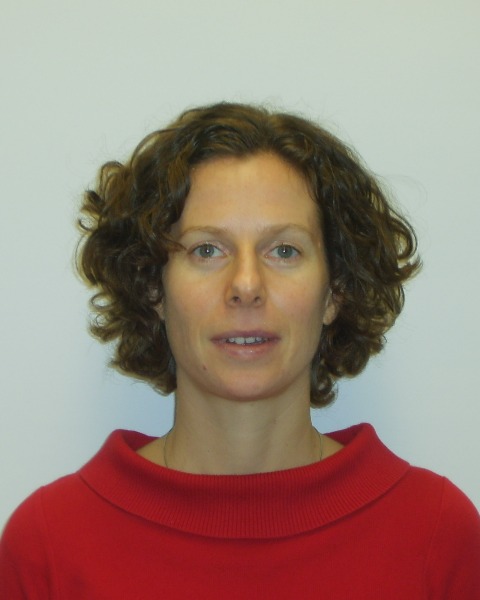Oral Presentation
The use of a game-based application for older adults with dizziness improves compliance to exercise prescription
Wednesday, November 1, 2023
6:20 PM - 6:26 PM
Location: VIRTUAL

Paulien E. Roos, PhD (she/her/hers)
Manager
CFD Research Corporation
Huntsville, Alabama, United States
Poster Presenter(s)
Research Objectives: To investigate the difference in performance of vestibular rehabilitation exercises when using the Vestibular Rehabilitation App compared to current standard of care exercise program.
Design: A mobile application was developed that provides vestibular rehabilitation exercises in a game-based interactive format [1]. The app records head and body movement during vestibulo-ocular (VORx1) and balance exercises, and provides feedback to patients during and after exercise.
Setting: Laboratory setting.
Participants: Forty participants (20 females) between 60-75 (mean age 67±5.7 years) with symptomatic or bilateral vestibular hypofunction (Clinical Trial: NCT05436067).
Interventions: Motion data was collected an inertial sensor (MbientLab, Inc) while participants performed a rehabilitation session both with and without the App (randomized order). Patients performed VORx1 (pitch and yaw) and weight shift exercises (antero-posterior and medio-lateral).
Main Outcome Measures: Head and whole-body range of motion (ROM) and frequency. A paired t-test was used to compare the App and no-App conditions.
Results: For VORx1 exercises, when using the App, head ROM was significantly smaller during pitch and yaw exercises while variance in ROM was significantly smaller for the yaw exercises only. Frequency of head motion was significantly higher and variance of frequency significantly lower when using the App for VORx1 exercises.
For weight shift exercises, participants showed a significantly larger ROM and lower frequency when using the App. Variance in ROM did not differ significantly between conditions, while frequency showed significantly less variance when using the App.
Conclusions: Use of the App resulted in exercise performance that was closer to the prescription compared to exercise performance based only on clinician instructions.
References
[1] D’Silva et al., Front. Neurol., 2022.
Author(s) Disclosures: Research reported in this publication was supported by the NIDCD of the National Institutes of Health (NIH) (R44DC017408). Content is solely the authors’ responsibility and does not necessarily represent official views of the NIH. Roos, Pickle, and Zehnbauer have ownership in TheraVista Health.
Design: A mobile application was developed that provides vestibular rehabilitation exercises in a game-based interactive format [1]. The app records head and body movement during vestibulo-ocular (VORx1) and balance exercises, and provides feedback to patients during and after exercise.
Setting: Laboratory setting.
Participants: Forty participants (20 females) between 60-75 (mean age 67±5.7 years) with symptomatic or bilateral vestibular hypofunction (Clinical Trial: NCT05436067).
Interventions: Motion data was collected an inertial sensor (MbientLab, Inc) while participants performed a rehabilitation session both with and without the App (randomized order). Patients performed VORx1 (pitch and yaw) and weight shift exercises (antero-posterior and medio-lateral).
Main Outcome Measures: Head and whole-body range of motion (ROM) and frequency. A paired t-test was used to compare the App and no-App conditions.
Results: For VORx1 exercises, when using the App, head ROM was significantly smaller during pitch and yaw exercises while variance in ROM was significantly smaller for the yaw exercises only. Frequency of head motion was significantly higher and variance of frequency significantly lower when using the App for VORx1 exercises.
For weight shift exercises, participants showed a significantly larger ROM and lower frequency when using the App. Variance in ROM did not differ significantly between conditions, while frequency showed significantly less variance when using the App.
Conclusions: Use of the App resulted in exercise performance that was closer to the prescription compared to exercise performance based only on clinician instructions.
References
[1] D’Silva et al., Front. Neurol., 2022.
Author(s) Disclosures: Research reported in this publication was supported by the NIDCD of the National Institutes of Health (NIH) (R44DC017408). Content is solely the authors’ responsibility and does not necessarily represent official views of the NIH. Roos, Pickle, and Zehnbauer have ownership in TheraVista Health.
Learning Objectives:
- Upon completion, participants will be able to understand the benefits of using technology for vestibular rehabilitation.
- Upon completion, participants will be able to understand how technology may affect performance of rehabilitation exercises
- Upon completion, participants will be able to understand how remote monitoring could improve rehabilitation

.jpg)
